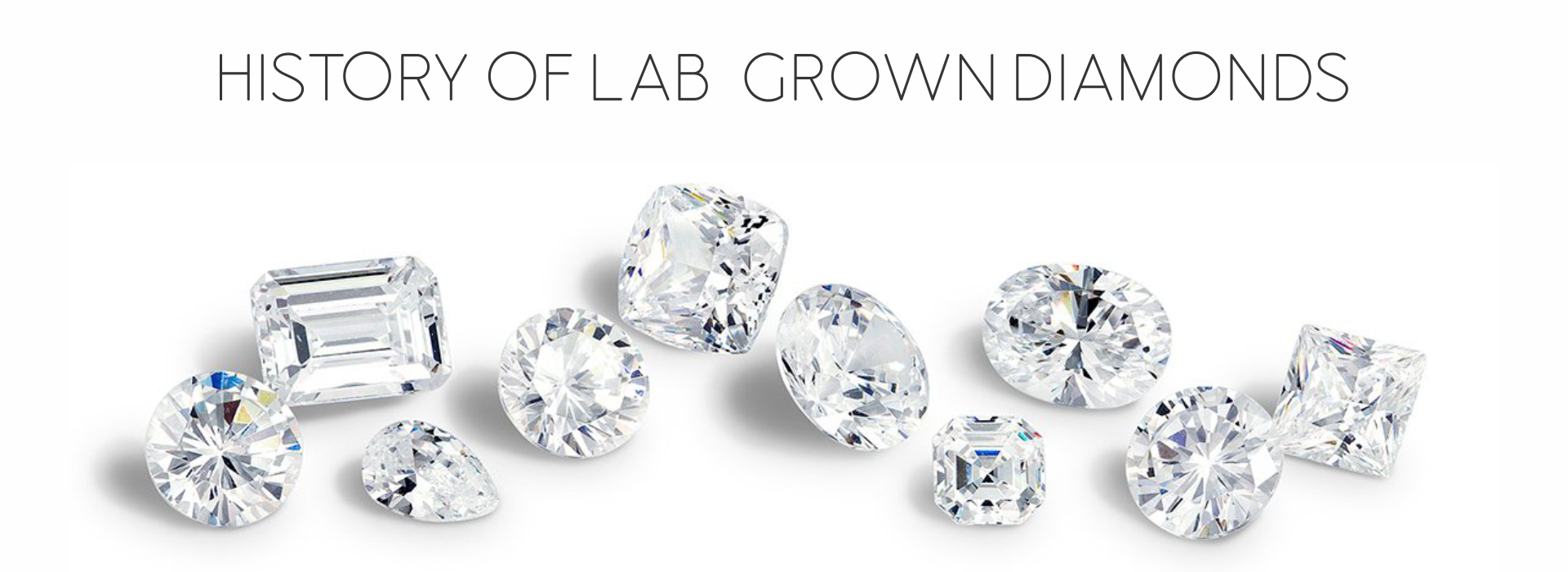Lab-grown diamonds have transformed the diamond industry over the past few years. Previously diamonds could only be sourced from specific locations through a complicated, expensive, and labor-intensive extraction process. Now diamonds can be precisely made in a factory nearly anywhere on earth.
Lab-grown diamonds have disrupted the traditional diamond industry. These lab-created diamonds have the same optical, physical, and chemical properties as natural diamonds but with greater affordability and ethical sourcing. However, the lab-created stones on the market today are the result of decades of work by researchers across the globe.
Explore how the fascinating, economy-changing history of lab-grown diamonds has reduced the price of diamonds and improved stone quality.
Discoveries and Failed Attempts :
The answer to when did lab-grown diamonds start begins two centuries ago. The first step toward synthetic diamonds came in 1772 when a French scientist named Antoine Lavoisier discovered that diamonds were made of carbon.
He put a diamond in a container with pure oxygen and then exposed the diamond to direct sunlight. He learned that the diamond was made of pure carbon when carbon dioxide was produced. His discoveries were later confirmed through experiments run by English scientist Smithson Tennant.
Early Experiments (Early 20th Century) :
The first attempts to create synthetic diamonds date back to the early 20th century. Two scientists named James Ballantyne Hannay and became the first to apply this new knowledge to synthesize a lab diamond.
They heated a mixture of iron and charcoal in a carbon crucible to 3,500℃. Unfortunately, the material for their crucible was not advanced enough to convert the raw materials into a diamond, but their idea sparked later inventions that would create diamonds.
The First Lab-Grown Diamonds (1955) :
The middle of the 20th century saw the first lab created diamonds. The preliminary breakthroughs came from American Nobel Laureate Percy Bridgeman, who made a hydraulic anvil capable of high pressure and temperature.
Using a design based on Bridgeman’s machine, General Electric Company engineer Herbert Strong placed a mixture of carbon and iron and some small seed diamonds into a crucible and heated it to 1,250°C (2282°F).
He then pressurized the mixture to 50,000 atmospheres and left it overnight. The following morning he discovered a lump of material that, upon polishing, was revealed to be the first artificially grown diamond in human history.
General Electric (GE) was the first to successfully produce diamonds in a laboratory using the HPHT method. In 1955, GE announced the successful synthesis of diamonds under high pressure and high temperature. These early synthetic diamonds were primarily used for industrial purposes, such as cutting tools.
Cubic Press and Belt Press (1950s-1960s) :
The HPHT method was refined over the years, and different apparatus, such as cubic presses and belt presses, were developed to create synthetic diamonds. These diamonds were initially used for industrial purposes, including cutting tools.
Chemical Vapour Deposition (CVD) Process (1980s) :
In the 1980s, Researchers developed an alternative method for growing diamonds known as Chemical Vapour Deposition (CVD). This process involves the use of hydrocarbon gases to deposit carbon atoms onto a substrate, forming a diamond crystal. This process offered a different approach to diamond synthesis and became a significant advancement in the field. CVD has since become a popular method for producing gem-quality diamonds.
Advancements and Commercialization (1990s-2000s) :
Over the years, advancements in technology and a better understanding of diamond-growing processes led to the production of larger and higher-quality synthetic diamonds. Gem-quality lab-grown diamonds started to gain acceptance in various industries, including jewellery.
Growing Acceptance (2010s) :
Lab-grown diamonds gained increasing popularity in the consumer market, driven by factors such as ethical and environmental concerns, as well as the growing acceptance of lab-grown diamonds as a legitimate alternative to mined diamonds. Jewellery retailers and manufacturers began offering lab-grown diamonds alongside natural diamonds.
Market Growth and Recognition (2020s) :
The lab-grown diamond market continued to grow, with an increasing number of consumers choosing these diamonds for various reasons, including sustainability and cost. Major jewellery retailers and manufacturers started offering jewellery featuring lab-grown diamonds alongside traditional mined diamonds. Various brands emerged, specializing in lab-grown diamonds, contributing to the mainstream acceptance of these diamonds.
Technological Innovations (Ongoing) :
Continued research and technological innovations have led to improvements in the size, quality, and cost-effectiveness of lab-grown diamonds. The industry is continually evolving, with ongoing efforts to push the boundaries of what is achievable in terms of diamond growth.


